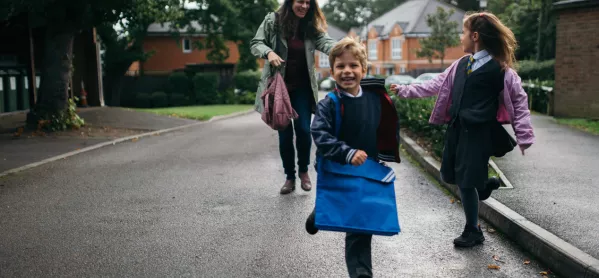- Home
- 5 ways to support pupils with SEND back to school
5 ways to support pupils with SEND back to school

Schools have been carefully planning the most sensitive and safe ways to welcome all pupils back this September.
But particular care may be needed to support some pupils, such as those with special educational needs and disabilities (SEND), according to education experts at the University of Sussex.
They surveyed parents of children with SEND to gauge their experience of homeschooling and their concerns about sending their children back to school.
Responses were varied, with four in 10 saying they felt their child had been “left behind” by their school during lockdown, while others reported fantastic support from their school’s Sendco.
Based on the 502 responses from parents across the UK, the Sussex academics have put together a list of recommendations to help teachers, teaching assistants and Sendcos welcome pupils with SEND back to school after the lockdown.
Support: SEND system not working well, admits DfE
Parents: Let us decide when pupils with SEND return
Research: ‘SEND children and families need more help’
Here are their main suggestions:
1. Take it easy: create a slow and gradual approach to returning to full-time education
- During the first days back at school, the experts suggest, ensure that all aspects of school emphasise a steady, gentle and gradual approach that avoids abrupt changes.
- As the term progresses, teachers could use technology, phased returns, one to one support, small group work, social stories, checklists and visual supports to help children transition back into full-time education.
This is one of the key recommendations from the research. While some parents in the survey reported their child was eager to go back to school and others said they were not, they all agreed that the return should be gradual.
2. Prioritise routines, wellbeing and social interaction ahead of academic pressure
- Plan highly structured activities to begin to establish and re-establish class routines during the first days back.
- Designate time to provide students with opportunities to engage with friendship groups.
- Provide support for those children that are not looking forward to, or are anxious about, the return to full-time education.
- As the term progresses, foster social communication and interaction.
Respondents to the survey consistently identified wellbeing, relationships and routines as a focus for the first half-term, stressing the importance of establishing these routines early and on understanding the child’s needs.
The majority of respondents also said the social aspects of education were the most affected by the lockdown, with some commenting that turn-taking, sharing, group activities, and diverse conversations had been more challenging to practise at home.
3. Re-assess children’s needs
Re-assessing the current and developing social, emotional academic needs of children should be made a priority as the term progresses, the researchers said.
4. Listen to parents’ and children’s homeschooling experiences
During the first few days of school, researchers say it will be important to:
- Ensure frequent contact with parent carers to listen to their experience of lockdown for their family.
- Communicate with the children directly to identify unique concerns that need to be addressed.
- Take into account that children’s diverse experiences during lockdown will impact their feelings towards returning to school and could affect their engagement and attitude.
Parents reported a variety of experiences during lockdown.
Most said their child was less stressed than when they were at school, but some were worried about the impact of lockdown on their child’s mental health.
Others said their children were displaying increasingly challenging verbal and physical behaviours at home.
Nearly 90 per cent of survey respondents identified personal stresses and problems at home related to the care and responsibility of supporting their child with SEND during lockdown.
5. Take into account parents’ and children’s anxieties and preferences to redevelop classroom routines
Parents identified several positives for their children from homeschooling during lockdown, including being able to take breaks when needed and having more physical exercise, gardening, cooking, crafts or playtime.
Others reported that their children enjoyed independent and online learning and setting their own routines.
However, four out of five parents reported being concerned about their child going back school, expressing a range of worries: social pressures, bullying, being falling in their work, Covid risks, being in a new class or school with new children and adults, keeping up with homework and adapting to new routines.
During the first term, teachers, TAs and Sendcos could use the home learning preferences and anxieties identified by parent carers and children to redevelop and enhance learning at school, the researchers said.
Dr Christina Hancock, lecturer in primary education at the University of Sussex, said: “Although parents encountered many challenges in homeschooling during lockdown, our survey shows they clearly had some positive experiences that enhanced learning and reduced anxieties such as more time with their families, greater flexibility, the ability to pursue personal interests and limited social pressures.
“Parents found that small aspects such as their children deciding their own routines or taking a break when needed were all beneficial and these could be continued in the classroom.
“Embedding these positive aspects of homeschooling into schools offers the potential for real and lasting impact for children with SEND and would significantly enhance their classroom learning experience.”
Keep reading for just £1 per month
You've reached your limit of free articles this month. Subscribe for £1 per month for three months and get:
- Unlimited access to all Tes magazine content
- Exclusive subscriber-only stories
- Award-winning email newsletters



